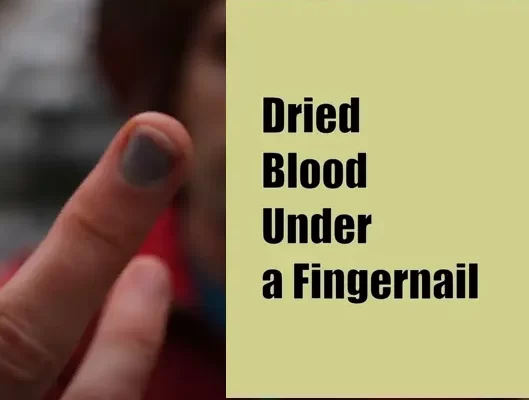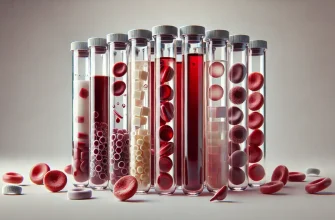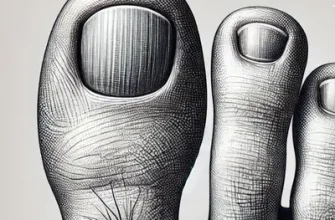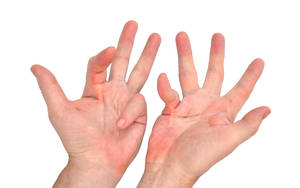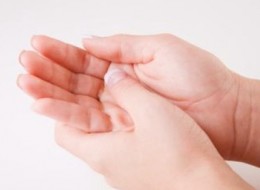Causes of Dried Blood Under a Fingernail
Subungual hematoma, can occur due to various reasons. Here are some of the most common causes:
- Trauma or Injury:
- The most frequent cause of dried blood beneath a fingernail is direct trauma or injury to the nail or finger. This can happen from smashing the finger with a hammer, getting it caught in a door, or experiencing any forceful impact.
- Repetitive Stress:
- Repetitive actions such as typing, playing certain sports can cause micro-traumas that lead to bleeding under the nail over time.
- Constriction:
- Tight-fitting shoes or gloves can exert pressure on nails, potentially causing blood vessels to rupture and bleed underneath the nail plate.
- Disease or Disorder:
- Certain conditions, such as psoriasis or lichen planus, can affect the nails and potentially cause bleeding.
- Drug Side Effects:
- Some medications, especially those that affect clotting or the blood vessels, can increase the risk of subungual hematomas.
- Surgery:
- Operations involving the hands or feet can inadvertently lead to bleeding under the nail.
- Blood Disorders:
- Individuals with hemophilia or other bleeding disorders are more prone to bleeding episodes, including under the nails.
- Fungal Infections:
- Nail fungus can sometimes lead to nail damage and, subsequently, to bleeding.
Complications and Dangers Associated with Dried Blood Under a Fingernail
Dried blood under a fingernail can seem like a minor injury. However, it can lead to various complications if not properly monitored or treated. Here is a listicle detailing potential issues:
- Infection
- The presence of blood beneath the nail can create an ideal environment for bacteria to thrive, potentially leading to an infection. Signs include increased pain, redness, swelling, and discharge.
- Increased Pressure and Pain
- As blood accumulates, it can cause pressure under the nail, leading to significant pain. Ignoring this pressure can lead to persistent discomfort and can even disrupt nail growth.
- Loss of Nail
- If the pressure underneath the nail is not alleviated, it can cause the nail to become loose and eventually fall off. Although the nail typically regrows, it can take many months to do so.
- Impaired Nail Growth
- When the injury is severe or not correctly managed, it can damage the nail bed. This could result in permanent deformity or irregular growth of the new nail.
- Permanent Nail Deformity
- Serious or repeated trauma can cause permanent changes to the shape and texture of the nail, such as ridges, indentations, or a thickened nail plate.
- Distal Phalanx Fracture
- Sometimes, a severe injury not only causes a hematoma but also fractures the bone under the nail (distal phalanx). Such fractures can cause long-term complications if not treated.
- Complex Regional Pain Syndrome (CRPS)
- In rare cases, persistent pain and swelling can evolve into CRPS, a chronic pain condition that may require specialized management.
- Cosmetic Issues
- In addition to functional problems, dried blood under the nail can cause aesthetic issues, which can be concerning for many people.
- Psychological Impact
- The appearance of the injury and the potential loss of the nail can have psychological effects, such as decreased self-esteem or anxiety, especially if the healing process is prolonged.
- Functional Limitations
- Depending on the finger affected and the severity of injury, there may be limitations in performing daily activities, especially those requiring fine motor skills.
Treatment Methods Depending on the Cause
In the table below, key information is summarized for quick reference:
| Cause | Explanation | Solution |
|---|---|---|
| Trauma or Injury | A result of direct forceful impact to the nail area. | Protect the affected area, possibly seek medical attention. |
| Repetitive Stress | Micro-traumas from frequent, repetitive actions. | Rest and activity modification. |
| Constriction | Pressure from tight-fitting accessories. | Wear properly fit equipment. |
| Disease or Disorder | Skin conditions affecting the nail. | Consult a dermatologist for appropriate treatment. |
| Drug Side Effects | Medications interfering with clotting or blood vessels. | Consult with a physician for medication review. |
| Surgery | Post-operative bleeding under the nail. | Follow post-operative care guidelines. |
| Blood Disorders | Predisposition to bleeding due to an underlying health issue. | Work with a hematologist for proper management. |
| Fungal Infections | Nail damage due to fungus leading to bleeding. | Anti-fungal treatment recommended. |
Treating a subungual hematoma depends on the severity. For minor cases, icing and elevation may suffice; however, for more significant bleeding or painful cases, medical intervention may be necessary. It is crucial for individuals who notice dried blood under their fingernail to monitor the area for signs of infection or other complications and to seek medical advice if they are concerned or if the condition worsens.

